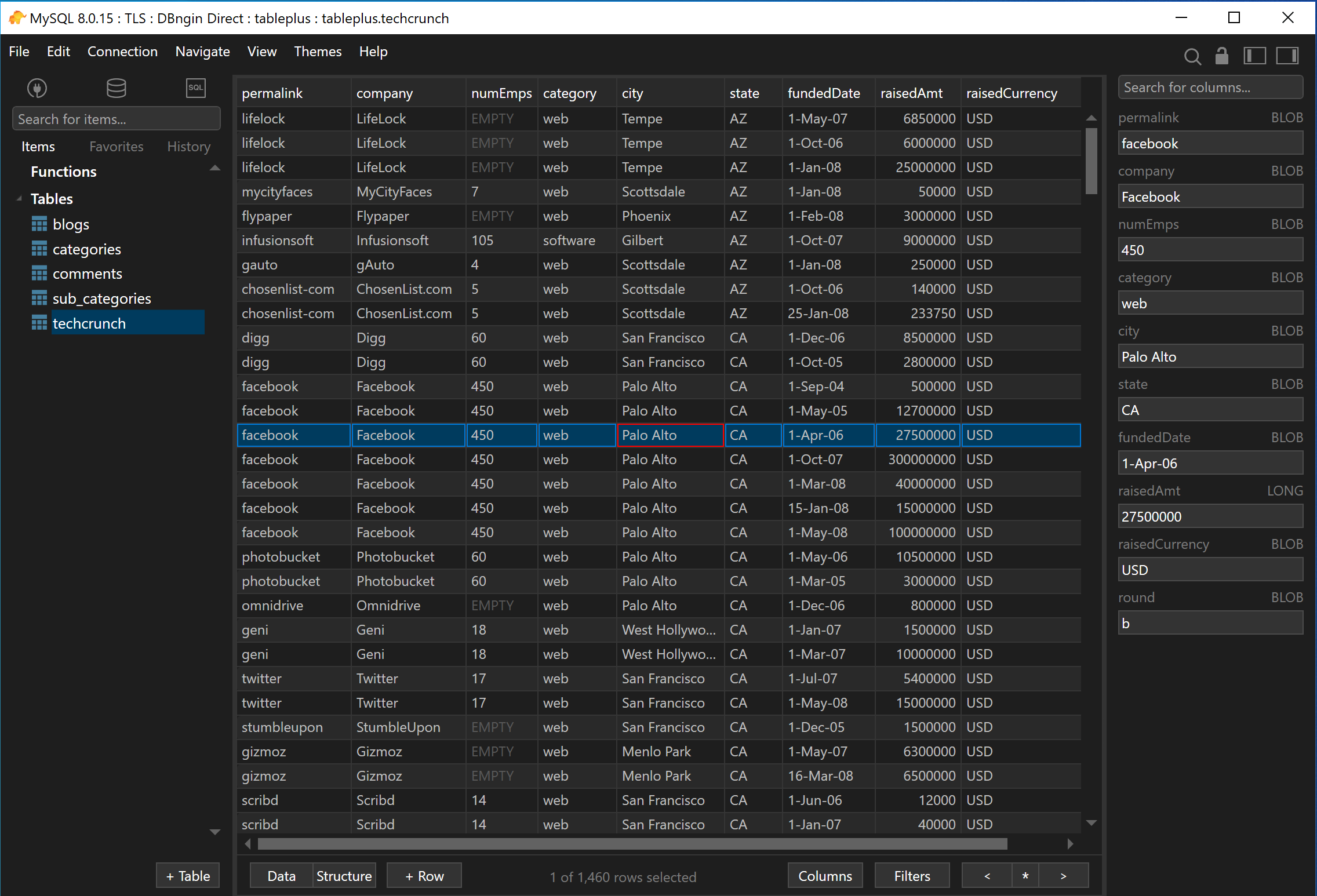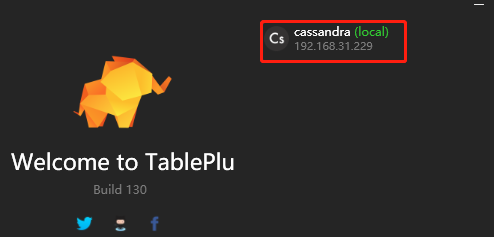

Looking to take your Cassandra skills to the next level? Check out DataStax Academy for more.

Supports highly customizable UI including configurations and appearance. We've made it easy and cost effective to count your data. Give it a try and let us know what you think. TablePlus is one of the most widely used on-premise database management clients supporting multiple types of databases ranging from SQL databases, like MariaDB, MySQL, and NoSQL databases, such as MongoDB and Cassandra. Instead, use one of the options outlined above to save resources and still find the answers you’re looking for. You can run the count(*) function in Cassandra just like you would in other databases. For small tables, you can increase the CQL timeout:Ĭqlsh -u cassandra -p cassandra -request-timeout=3600Ĭqlsh -e "copy keyspace.table_name (first_partition_key_name) to '/dev/null'" | sed -n 5p | sed 's/.A simple form that we can build with TabePlus, it is easy for you to look into many tables.

TablePlus provides native tool with simple UI that allows you to simultaneously manage multiple DB such as MySQL, Postgres, SQL Server, SQLite, Microsoft SQL Server and more.
#Tableplus cassandra password#
STEP 3 - In the User and Password fields, use the client ID and client secret from the token you created in the Prerequisites section of this. STEP 2 - In the Host and Port fields, use the host and cqlport values in the config.json above. A developer or DBA will run count(*) after a batch load to validate the number of records loaded or to find the number of rows in a table. STEP 1 - In Tableplus, create a new connection and select Cassandra as the target database. Note that this document describes the last version of the language. A count(*) will need to scan all the SSTables on all the nodes in the cluster. This document describes the Cassandra Query Language (CQL) version 3. Because Cassandra is a distributed operational database, the tables are spread across all the nodes in the cluster.
#Tableplus cassandra full#
Running count(*) is expensive in any database, because a full table scan is required. NET (26) IoT (26) In-vehicle (25) simulation (24) Machine learning (machine learning) (24) Photogrammetry (22) Measuring instrument (22) Video / Video (21) Visualization (21) UI (21) JavaScript (21) Metashape (20) TO DEAL (20) Support (19) Robotics (18) 3D model (18) ROS (18) DNA (18) Clinical (17) Deep learning (17) Raspberry Pi (17) Cyber security (17) EEG (17) Education (17) Psychology (16) AI (16) modeling (16) MATLAB (16) Image processing (16) Deepearning (15) Stimulus presentation (15) protocol (15) Arduino (15) Library (15) Structural analysis (15) Information dissemination September issue (14) (I.e.Count(*) is a function that returns the number of rows in a table. VR (43) Analysis tool (42) 3D camera (37) Small SBC (35) Statistical analysis (35) SBC (35) instrumentation (33) Spectrum (33) RealSense (32) Robot arm (31) Depth camera (29) AR (27).


 0 kommentar(er)
0 kommentar(er)
